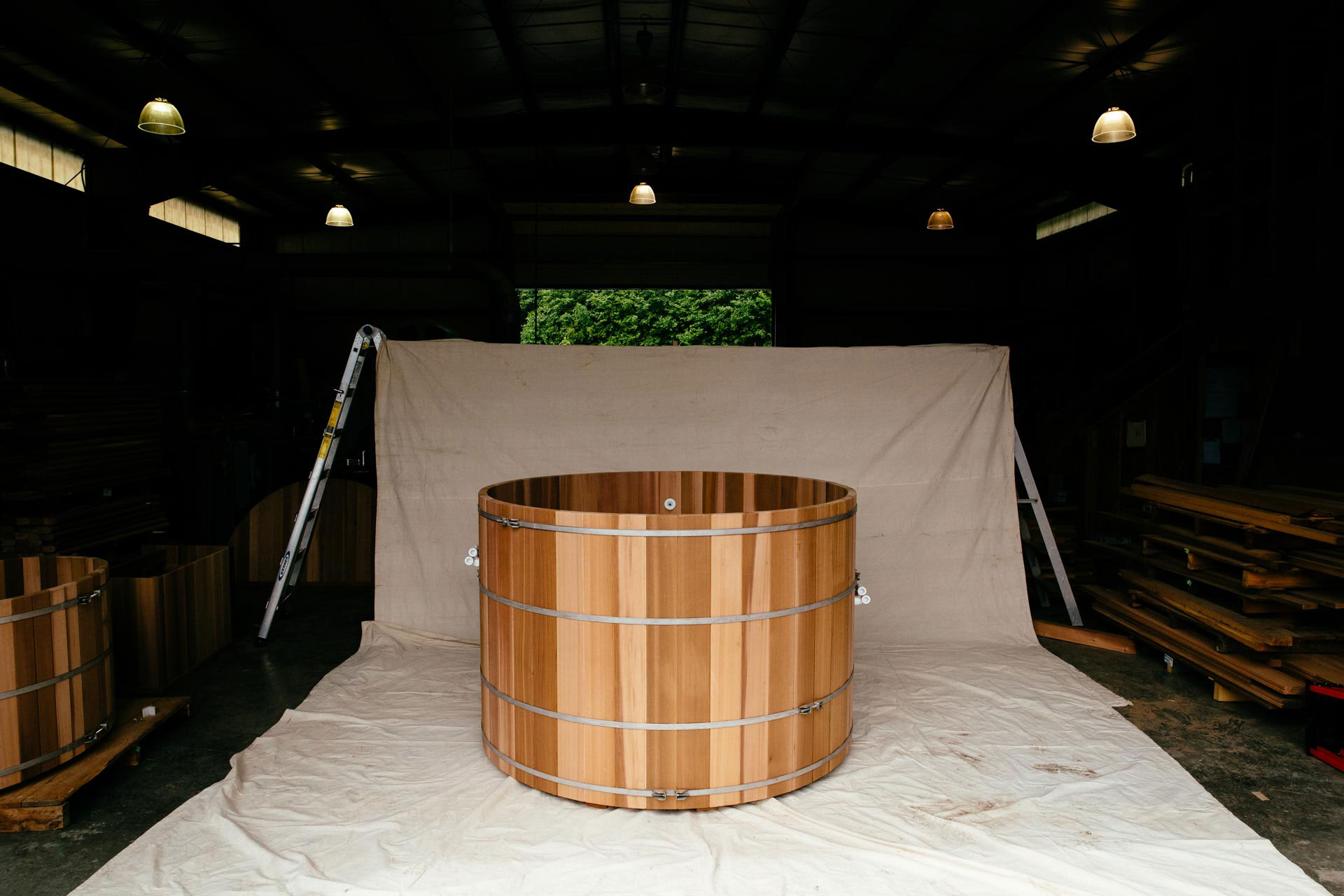External
A common brand of external heater is the Chofu, and other examples of home made heaters are common. External wood burners usually rely on a principle called “thermal siphoning”. Thermal siphoning is achieved by having the stove lower than the tub. Hot water rises, creating the circulation of the hot water. This transfer of heat is very slow but can be improved by the addition of an electric circulating pump.
An external heater will take up to twice as long to heat the same quantity of water compared to a submersible stove. External stoves must be drained in freezing weather. The advantage of this type of heater is that it does not take up space in the tub.

Submersible
The difference in heating efficiency between a submersible wood stove placed right in the hot tub and an external wood heater is huge. It stands to reason that if the stove is totally surrounded with water then all the heat goes into the hot tub rather than wasted into the air. The stove in addition has two heat exchanger pipes that go through the stove to capture heat that would normally go up the chimney.
Our submersible stoves are made from marine aluminum which is a very corrosion resistant metal with heat transfer properties. The below water portions of the stove are kept cool because the heat is rapidly transferred away by the water in the tub. Users are kept away from the hot above water parts of the stove by the heat shield which is essentially a cedar fence. The Forest Cooperage submersible stove will heat a 6ft diameter x 3ft high cedar barrel tub from just above freezing to tub temperature in 2.5 to 3 hours. Very little fire is needed to maintain temperature. The stove takes up about 25% of the space in the tub, but a 6×3 tub will still accommodate four adults.


